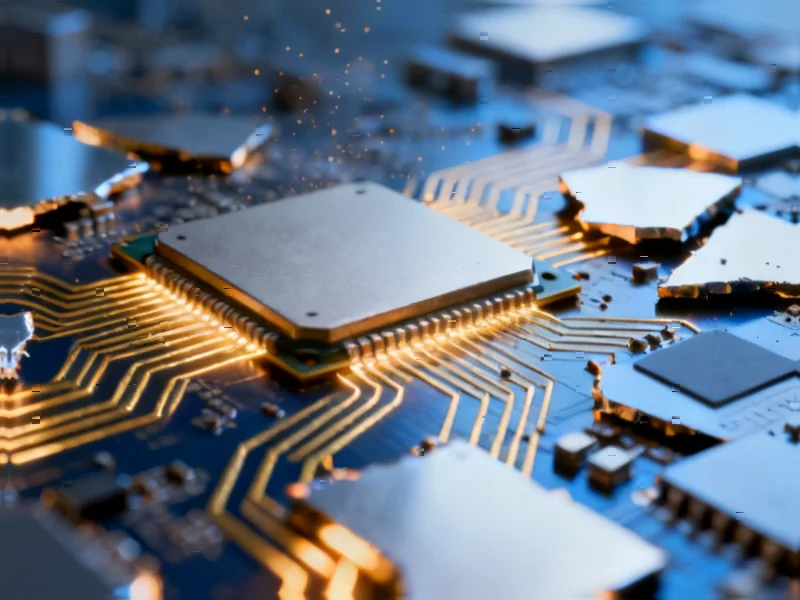According to Forbes, the rapid proliferation of AI services is creating unprecedented demand for electricity and water to power data centers across the United States. In New Carlisle, Indiana, an Amazon-owned complex operated by Anthropic already requires at least 500 megawatts of electricity—enough to power hundreds of thousands of homes—with the completed facility estimated to consume as much power as two Atlantas. Household electricity rates have spiked nearly 10% this year, largely due to data centers, prompting communities in Arizona, Virginia, and Ohio to push back against new facilities. A Sunrun survey of 1,000 people found 80% are worried about data centers driving up residential power prices, while policy reversals on renewable energy incentives threaten to compound the problem. This growing tension between technological progress and infrastructure limitations demands deeper examination.
The Hidden Architecture Behind AI’s Power Hunger
The fundamental challenge lies in the computational architecture required for modern AI systems. Unlike traditional computing workloads that can be optimized for efficiency, AI model training and inference operations involve massive parallel processing across thousands of graphics processing units (GPUs) simultaneously. Each GPU in these systems can draw 400-700 watts under load, and when you multiply that across the scale of facilities like the Indiana complex, the energy requirements become staggering. The cooling infrastructure needed to prevent these systems from overheating adds another layer of energy consumption, often requiring specialized liquid cooling systems that themselves demand significant power.
Why Renewable Solutions Are Falling Behind
The timing of this energy crisis couldn’t be worse for renewable energy integration. Large-scale solar and wind projects with battery storage—which could theoretically help meet data center demand—face significant deployment challenges. While research shows public concern about energy prices is growing, the infrastructure to address it is becoming more difficult to build. Geothermal projects remain in early planning stages, and next-generation nuclear solutions are years from commercial viability. This creates a dangerous gap where energy demand is exploding while clean supply solutions are being delayed, forcing reliance on existing fossil fuel infrastructure that drives both costs and emissions higher.
The Community Backlash and Its Implications
What makes the current situation particularly volatile is the shifting public perception of data centers as economic assets. Initially welcomed as symbols of progress, communities are now recognizing the limited job creation and economic benefits these facilities actually provide. The rejection of Project Blue in Tucson and similar pushback in Virginia and Ohio demonstrates a growing awareness of the infrastructure strain. When surveys from New Jersey and Wisconsin show majority support for higher energy rates for data centers, it signals a fundamental rethinking of who should bear the costs of technological advancement.
The AI Efficiency Paradox
We’re witnessing what I call the “AI efficiency paradox”—while individual AI models are becoming more computationally efficient per operation, the explosion in usage and model complexity is driving total energy consumption to unprecedented levels. Tools like OpenAI’s Sora for video generation and emerging platforms like Grokipedia represent a new class of energy-intensive applications that consumers use without understanding their infrastructure footprint. This creates a disconnect between user behavior and resource consumption that makes demand management exceptionally challenging.
The Path Forward Requires Architectural Innovation
Solving this crisis will require more than just building more power plants. The technology industry needs to fundamentally rethink AI architecture from the silicon level up. We’re likely to see increased investment in specialized AI chips optimized for energy efficiency rather than raw performance, greater emphasis on edge computing to reduce data transmission energy costs, and new cooling technologies that can significantly reduce the power overhead of temperature management. The companies that succeed in this new environment will be those that treat energy efficiency as a primary design constraint rather than an afterthought.
Broader Market Ramifications
The energy constraints affecting AI development are part of a larger pattern of infrastructure limitations impacting technological adoption. Similar to how EV adoption faces charging infrastructure challenges, AI growth is hitting power infrastructure walls. This suggests we may be entering an era where technological progress becomes increasingly constrained by physical infrastructure realities, forcing a more measured approach to innovation that considers resource availability from the outset rather than treating it as someone else’s problem to solve.




